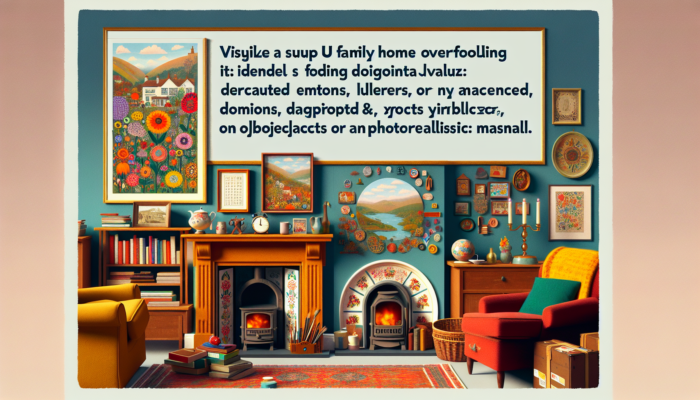Ultimate Guide to Revitalizing Your Travertine Floors for Lasting Elegance
Travertine floors are renowned for their exquisite beauty and enduring charm, establishing them as a preferred choice for discerning homeowners. Nonetheless, the porous characteristics of travertine can lead to a variety of challenges such as dirt accumulation, unsightly stains, and a gradual loss of shine over time. Basic cleaning strategies often fall short, prompting homeowners to seek answers to critical inquiries:
- What effective methods can I use to restore the original brilliance of my travertine floors?
- Which cleaning products are most effective for preserving the integrity of travertine surfaces?
- How do professional cleaning services ensure thorough cleaning of travertine without causing damage?
- Is sealing my travertine floor necessary, and what is the recommended frequency for reapplication?
If maintaining your travertine surfaces in impeccable condition feels overwhelming, enlisting the expertise of professionals could be your best bet. At Fabritec Tile Cleaning, we specialize in rejuvenating travertine floors to restore their original grandeur. In the sections that follow, we provide a detailed overview of our professional cleaning process along with practical tips that empower you to effectively maintain your travertine floors.
Understanding the Special Care Needs of Travertine Stone
Travertine, a unique type of limestone, is known for its natural formation of small holes and cavities which occur during its geological evolution. While these distinctive features enhance the stone’s aesthetic allure, they also render it highly absorbent. This inherent quality necessitates specialized attention and customized care to safeguard the stone’s beauty and prolong its lifespan.
Identifying Common Problems Encountered by Travertine Surfaces
- Build-up of dirt and grime: The porous nature of travertine allows dust and debris to become entrenched within its surface, leading to an untidy appearance.
- Etching and diminished shine: Contact with acidic substances, such as lemon juice or vinegar, can inflict surface damage that dulls the stone’s finish.
- Cracking and chipping: The weight of foot traffic or prolonged exposure to moisture can compromise the stone’s integrity, resulting in cracks and chips.
- Mold and mildew growth: Areas like bathrooms, kitchens, and outdoor spaces are particularly vulnerable to moisture-related issues, encouraging mold and mildew proliferation.
Utilizing improper cleaning techniques can worsen these issues, making professional deep cleaning and sealing indispensable for the maintenance of your travertine floors.
Thorough Process for Professional Travertine Cleaning

At Fabritec Tile Cleaning, we employ a meticulous, multi-step procedure to effectively restore the aesthetic appeal and functionality of travertine surfaces.
1. Comprehensive Evaluation and Inspection of the Travertine Surface
The professional cleaning process commences with a detailed inspection of the travertine surface. Our team conducts an evaluation that encompasses:
 Identifying stains and discoloration
Identifying stains and discoloration Assessing cracks, chips, or missing grout
Assessing cracks, chips, or missing grout Checking for areas with significant dirt accumulation
Checking for areas with significant dirt accumulation Looking for signs of moisture damage or mold growth
Looking for signs of moisture damage or mold growth
This initial assessment enables us to devise an effective cleaning strategy tailored to the unique conditions of your floor.
2. Application of pH-Neutral Cleaning Solutions for Optimal Pre-Treatment
Prior to engaging in deep cleaning, we utilize a specially formulated pH-neutral stone cleaner. Unlike conventional floor cleaners, this solution is designed specifically to dissolve dirt and stains without inflicting harm on the stone.
Advantages of Using pH-Neutral Cleaners:
- They safeguard against etching and dullness.
- They penetrate deeply into the pores, effectively lifting trapped dirt.
- They leave no harmful chemical residues behind that could damage the stone.
3. Intensive Deep Cleaning Using Advanced Equipment

Once the cleaner has effectively loosened dirt and grime, we deploy rotary scrubbing machines fitted with soft-bristle brushes to extract embedded debris. These cutting-edge machines:
 Safely eliminate deep-seated grime without scratching the surface.
Safely eliminate deep-seated grime without scratching the surface. Access the stone’s pores for a more comprehensive cleaning.
Access the stone’s pores for a more comprehensive cleaning. Ensure consistent cleaning across the entire floor surface.
Ensure consistent cleaning across the entire floor surface.
For intricate areas or delicate surfaces, we employ hand scrubbing techniques to prevent any potential damage to the travertine.
4. Customized Stain Removal Strategies for Effective Outcomes
For stubborn stains that refuse to budge, we utilize targeted stain-removal strategies specifically designed for the type of stain encountered.
Specialized Techniques for Stain Removal from Travertine
- Organic stains (such as food, coffee, or tea): Treated with hydrogen peroxide-based poultices for effective removal.
- Oil-based stains (like grease or cosmetics): Eliminated using a baking soda paste for optimum results.
- Rust stains: Removed with specialized rust removers formulated specifically for natural stone.
- Water spots and mineral deposits: Dissolved using a gentle, stone-safe descaler to avoid any damage.
5. Thorough Cleaning and Restoration of Grout Lines
Unsightly grout can detract from the overall beauty of even the most immaculate travertine floor. Utilizing steam cleaning techniques alongside professional-grade grout brushes, we effectively extract embedded grime from the grout lines.
In instances where grout is cracked or missing, we perform grout repair and recoloring to restore a seamless and uniform appearance.
6. Rinsing and Complete Elimination of Residual Cleaning Agents
Upon finishing the cleaning process, we carefully rinse the entire surface using high-pressure water to remove any remaining cleaning agents or loosened dirt. A wet vacuum is employed to extract excess moisture, ensuring a quick drying time.
7. Professional Repair of Cracks, Holes, and Surface Imperfections

The porous nature of travertine renders it susceptible to small holes and cracks. If these imperfections are not addressed, they can trap dirt and contribute to further deterioration over time.
We utilize stone-specific fillers to expertly repair:
- Minor pits and holes
- Hairline cracks
- Chipped edges
This vital step not only enhances the visual appeal of the stone but also significantly extends its overall lifespan and durability.
8. Application of a Premium Sealant for Maximum Protection
Sealing is an essential procedure in preserving the beauty of travertine while preventing future damage. After cleaning and repairs are finalized, we apply a high-quality stone sealer.
Understanding the Varieties of Travertine Sealers
- Penetrating Sealer: Absorbs into the stone without altering its appearance, making it suitable for both polished and natural travertine.
- Surface Sealer: Creates a protective layer on the stone’s surface, ideal for honed or filled travertine.
9. Conducting a Final Walkthrough and Assurance of Quality
Before concluding our service, we perform a thorough walkthrough to ensure that every aspect of the floor has been cleaned, repaired, and sealed to the highest standards. Furthermore, we provide homeowners with personalized maintenance recommendations to keep their travertine floors in pristine condition.
Advantages of Opting for Professional Travertine Cleaning Services

While the prospect of cleaning your travertine floors yourself may seem economically sensible, the long-term benefits of professional cleaning far outweigh those temporary solutions.
Key Reasons to Engage Professional Cleaning Services:
 Deep cleaning that addresses more than just surface dirt.
Deep cleaning that addresses more than just surface dirt. Prevention of etching and damage caused by harsh chemicals.
Prevention of etching and damage caused by harsh chemicals. Sealing that extends the lifespan of the stone.
Sealing that extends the lifespan of the stone. Time-saving and hassle-free service delivered by trained experts.
Time-saving and hassle-free service delivered by trained experts.
Engaging in a professional cleaning service every 12 to 24 months will help maintain your travertine floors in optimal condition while preventing costly long-term damage.
Essential Maintenance Practices for Homeowners with Travertine Floors
To keep your travertine floors in excellent condition between professional cleanings, adhere to these recommended best practices:
- Utilize Appropriate Cleaning Tools: Employ soft microfiber mops to prevent scratches and apply pH-neutral stone cleaners to protect the surface. Steer clear of abrasive scrubbers that could wear down the stone.
- Promptly Address Spills: Given that travertine absorbs liquids quickly, it is crucial to wipe up spills immediately to avert potential staining.
- Avoid Acidic and Harsh Cleaning Products: Do not use vinegar, lemon juice, or ammonia-based cleaners, as these can lead to etching and damage.
- Regular Dusting and Sweeping: Dust and sand particles can scratch the travertine surface. Consistent sweeping or vacuuming will minimize buildup and help maintain its appearance.
- Reapply Sealer Annually: To ensure ongoing protection against stains and moisture, it is advisable to re-seal your travertine every 12 to 24 months.
Transform Your Travertine Floors with Expert Professional Services
Travertine floors represent a considerable investment that necessitates specialized cleaning and maintenance for optimal longevity. At Fabritec Tile Cleaning, we apply advanced techniques, effective stain removal methods, and high-quality sealers to restore your travertine to its original beauty.
If you are located in the New Malden area and require expert travertine cleaning services, do not hesitate to contact us at 01372-664-337 or visit our website for further information. Let us assist you in rejuvenating your travertine floors and restoring their original brilliance!
This post was created by the professionals at https://tilecleaning surrey.co.uk/hounslow/travertine-cleaning.html. on behalf of Fabritec Tile Cleaning In New Malden
The Article How Professionals Clean Travertine: Expert Tips and Insights from Fabritec Tile Cleaning appeared first on https://fabritec.org
The Article Expert Tips for Cleaning Travertine from Fabritec Tile Cleaning Was Found On https://limitsofstrategy.com
References:
Expert Tips for Cleaning Travertine from Fabritec Tile Cleaning



